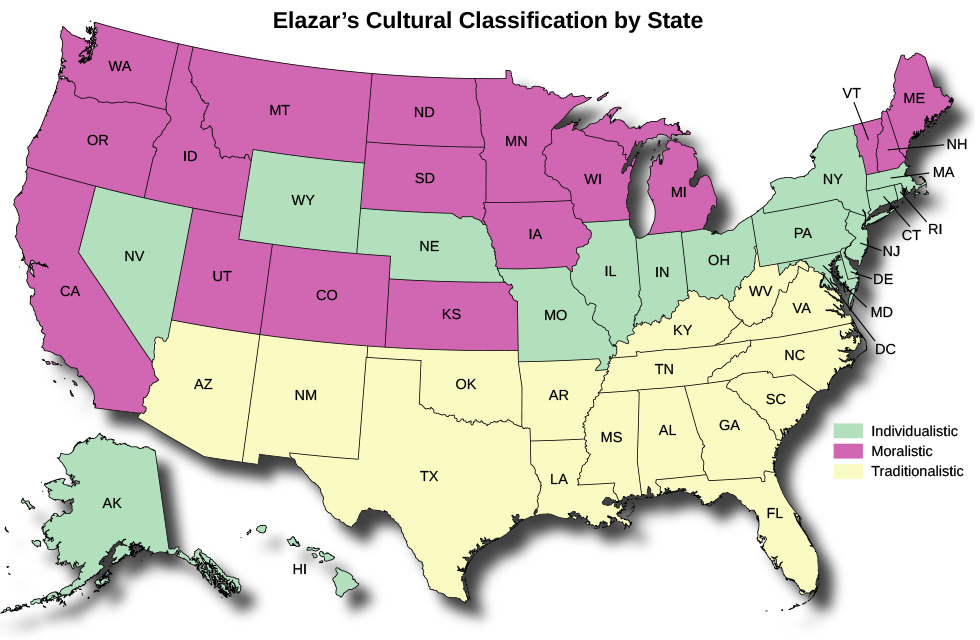| << Chapter < Page | Chapter >> Page > |
By the end of this section, you will be able to:
Some states, such as Alaska, are endowed with natural resources. They can use their oil or natural gas reserves to their advantage to fund education or reduce taxes. Other states, like Florida, are favored with a climate that attracts tourists and retirees each winter, drawing in revenues to support infrastructure improvements throughout the state. These differences can lead to strategic advantages in the economic fortunes of a state, which can translate into differences in the levels of taxes that must be collected from citizens.
But their economic fortunes are only one component of what makes individual states unique. Theorists have long proposed that states are also unique as a function of their differing political cultures, or their attitudes and beliefs about the functions and expectations of the government. In the book, American Federalism: A View from the States , Daniel Elazar first theorized in 1966 that the United States could be divided into three distinct political cultures: moralistic, individualistic, and traditionalistic ( [link] ). The diffusion of these cultures throughout the United States is attributed to the migratory patterns of immigrants who settled in and spread out across the country from the east to the west coast. These settlers had distinct political and religious values that influenced their beliefs about the proper role of government, the need for citizen involvement in the democratic process, and the role of political parties.

In Elazar’s framework, states with a moralistic political culture see the government as a means to better society and promote the general welfare. They expect political officials to be honest in their dealings with others, put the interests of the people they serve above their own, and commit to improving the area they represent. The political process is seen in a positive light and not as a vehicle tainted by corruption. In fact, citizens in moralistic cultures have little patience for corruption and believe that politicians should be motivated by a desire to benefit the community rather than by a need to profit financially from service.
Moralistic states thus tend to support an expanded role for government. They are more likely to believe government should promote the general welfare by allocating funds to programs that will benefit the poor. In addition, they see it as the duty of public officials to advocate for new programs that will benefit marginal citizens or solve public policy problems, even when public pressure to do so is nonexistent.

Notification Switch
Would you like to follow the 'American government' conversation and receive update notifications?